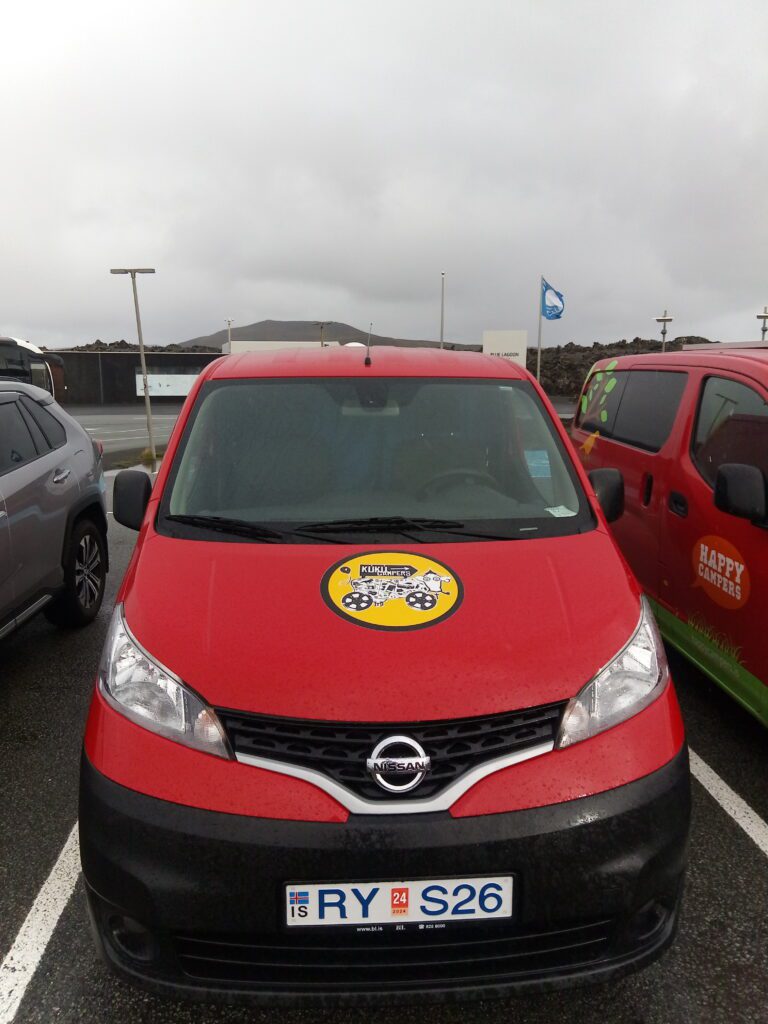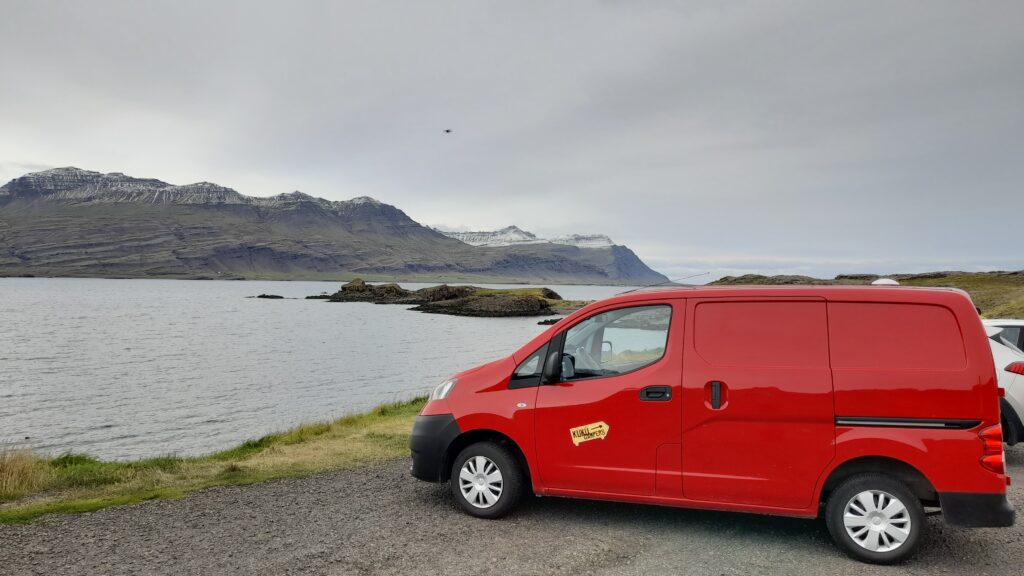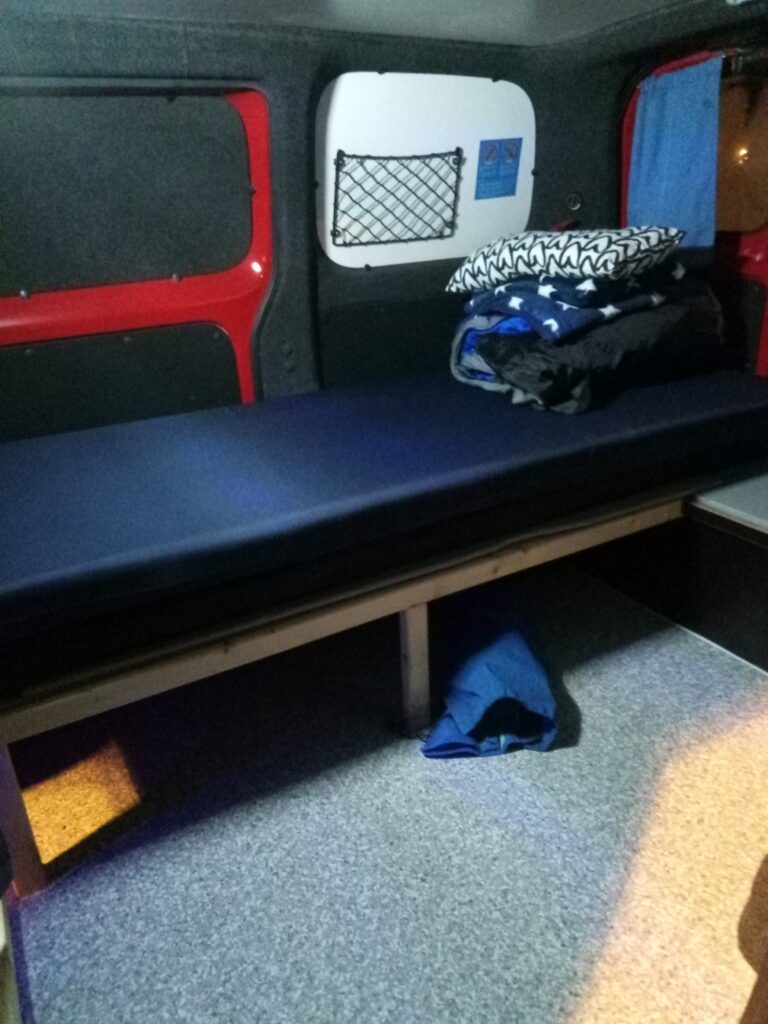Book now
Renting a Campervan in Iceland
Are you ready for an unforgettable adventure in Iceland? Look no further than renting a campervan for an experience that combines freedom, flexibility, and exploration. Iceland’s breathtaking landscapes and natural wonders are best discovered at your own pace, and a campervan provides the perfect means to do just that. In this article, we’ll guide you through everything you need to know about renting a campervan in Iceland, from choosing the right vehicle to planning your itinerary and experiencing the country’s unique culture.
Introduction
Iceland has become synonymous with outdoor adventure and stunning scenery, making it an increasingly popular destination for travelers seeking a unique experience. Renting a campervan allows you to immerse yourself in Iceland’s natural beauty while enjoying the convenience and comfort of having your own mobile accommodation. Whether you’re chasing waterfalls, exploring volcanic landscapes, or hoping to catch a glimpse of the elusive Northern Lights, a campervan provides the ultimate freedom to explore at your own pace.
Choosing the Right Campervan
Before embarking on your Icelandic adventure, it’s essential to choose the right campervan that suits your needs and preferences. In Iceland, you’ll find a variety of campervans available for rental, ranging from compact vans to spacious motorhomes.
Consider factors such as the number of people traveling, the level of comfort desired, and the type of roads you plan to drive on. Compact campervans are ideal for solo travelers or couples, offering ease of maneuverability and better fuel efficiency. For larger groups or families, spacious motorhomes with multiple sleeping areas and amenities like kitchenettes and bathrooms provide a more comfortable experience.
When selecting a campervan, also pay attention to the vehicle’s age, mileage, and condition. It’s recommended to choose a reputable rental company that offers well-maintained and reliable vehicles. Reading customer reviews and comparing prices and features will help you make an informed decision.
Booking your campervan in advance is highly recommended, especially during the peak travel seasons in Iceland. The demand for campervans can be high, so securing your reservation ahead of time ensures availability and allows you to plan your trip more effectively.





I rented my campervan at: Kukucamper
Campervan Rental Costs and Insurance
Before finalizing your campervan rental, it’s crucial to understand the costs involved and the insurance options available. Rental prices for campervans in Iceland vary depending on the size, type, and rental duration. On average, expect to pay between $100 and $300 per day, with discounts available for longer rentals.
Insurance is an essential aspect to consider when renting a campervan. Most rental companies offer basic insurance coverage, which typically includes collision damage waiver (CDW) and theft protection. However, these policies often come with a high excess amount, meaning you would be liable for a significant portion of the repair or replacement costs in case of an accident or theft.
To minimize your financial risk, it’s advisable to purchase additional insurance coverage, such as Super Collision Damage Waiver (SCDW) or Gravel Protection (GP). These policies reduce or eliminate the excess amount, providing you with greater peace of mind during your journey.
Planning Your Campervan Adventure
With your campervan booked and insurance sorted, it’s time to plan your adventure in Iceland. The country is renowned for its diverse landscapes, including majestic waterfalls, geothermal areas, glaciers, and volcanic formations. Consider the following must-visit destinations for a truly unforgettable experience:
Must-Visit Destinations in Iceland
- The Golden Circle: Explore the iconic Golden Circle route, which includes the breathtaking Gullfoss waterfall, the geothermal area of Geysir, and Thingvellir National Park, a UNESCO World Heritage Site. Read my article: The Golden Circle: Iceland’s Crown Jewel of Natural Wonders
- South Coast: Drive along the picturesque South Coast, where you’ll find black sand beaches, towering waterfalls like Seljalandsfoss and Skogafoss, and the impressive Jokulsarlon Glacier Lagoon. Read my article:Vatnajökull National Park and Diamond Beach
- Snæfellsnes Peninsula: Discover the Snæfellsnes Peninsula, often referred to as “Iceland in miniature,” with its dramatic coastline, volcanic peaks, and the majestic Snæfellsjökull glacier.
- The Ring Road: Embark on a complete circumnavigation of Iceland by driving the famous Ring Road, which offers stunning views of glaciers, fjords, and remote coastal villages. Read my article: Iceland ring road in 10 days
- The Westfjords: Venture into the remote and rugged Westfjords region, known for its dramatic cliffs, birdwatching opportunities, and untouched natural beauty.
Suggested Itineraries for Different Durations
Depending on the duration of your trip, you can tailor your itinerary accordingly. Here are some suggested itineraries for different lengths of stay:
- 3-5 Days: Explore the Golden Circle, visit the South Coast waterfalls and black sand beaches, and take a glacier hike on Sólheimajökull. If time permits, venture to the charming town of Vik and witness the beauty of Reynisfjara Beach and Dyrhólaey.
- 7-10 Days: In addition to the Golden Circle and the South Coast, take the opportunity to drive along the Eastfjords, where you’ll encounter stunning landscapes, charming fishing villages, and opportunities for hiking and wildlife spotting. Consider visiting the otherworldly Lake Mývatn area and taking a detour to the vibrant capital city of Reykjavik.
- 14+ Days: With a longer duration, you can venture further into the remote regions of Iceland. Explore the Westfjords, the rugged and untouched landscapes of the North, and the mystical beauty of the Snæfellsnes Peninsula. Don’t miss the chance to visit the stunning highlands, where you’ll find vast lava fields, colorful mountains, and natural hot springs.
Read my article: Iceland ring road in 10 days
Important Considerations for Driving and Camping in Iceland
Driving in Iceland comes with its own unique challenges and considerations. To ensure a safe and enjoyable journey, keep the following tips in mind:
- Understand Icelandic Road Conditions and Signage: Familiarize yourself with Icelandic road conditions, especially during the winter months when snow and ice can make driving more challenging. Pay attention to road signs, which provide important information about speed limits, road conditions, and potential hazards.
- Safety Precautions for Driving in Iceland: Drive cautiously and adjust your speed to match the road conditions. Be mindful of other drivers, especially on narrow and gravel roads. Keep a safe distance from the vehicle in front of you, as sudden stops or wildlife crossings are common in Iceland. Always use your seatbelt and headlights, and never drive under the influence of alcohol or drugs.
- Emergency Services and Resources for Travelers: Familiarize yourself with emergency contact numbers, including the Icelandic Road Administration’s emergency line. Carry a reliable GPS or map, as well as a well-stocked emergency kit with essential items like food, water, warm clothing, and a first aid kit.
Essential Gear and Supplies
Packing the right gear and supplies is essential for a comfortable and enjoyable campervan adventure in Iceland. Here’s a list of essentials to consider:
Packing List for a Campervan Trip in Iceland
- Warm clothing: Pack thermal layers, waterproof jackets and pants, hats, gloves, and sturdy waterproof boots.
- Bedding: Bring warm sleeping bags, pillows, and extra blankets for colder nights.
- Cooking equipment: Include a portable stove, cookware, utensils, and basic spices.
- Food and water: Stock up on non-perishable food items and carry plenty of drinking water.
- Camping gear: Don’t forget a tent, camping chairs, and a table for outdoor dining.
- Lighting: Bring headlamps or flashlights for navigating during the dark Icelandic nights.
- Toiletries: Include toilet paper, wet wipes, hand sanitizer, and any personal hygiene products you may need.
- Power sources: Carry portable chargers for your electronic devices, as well as adapters for Icelandic outlets.
Recommended Outdoor Gear and Clothing
Iceland’s unpredictable weather requires adequate outdoor gear. Consider the following:
- Waterproof and windproof outer layers
- Insulated layers for warmth
- Quick-drying and moisture-wicking clothing
- Hiking boots with good traction
- Hats, scarves, and gloves for protection against the cold
- Sunglasses and sunscreen for sun protection
- Hiking poles for added stability on challenging terrains
- Dry bags or waterproof cases to protect your belongings from rain and water splashes
Food and Cooking Essentials for Self-Catering
One of the advantages of traveling in a campervan is the ability to prepare your own meals. Here are some food and cooking essentials to pack:
- Non-perishable food items such as canned goods, pasta, rice, and snacks
- Fresh produce that can withstand the journey, such as fruits and vegetables with a longer shelf life
- Spices, herbs, and condiments to add flavor to your meals
- Cooking utensils, pots, and pans
- Plates, bowls, cups, and cutlery
- Cleaning supplies for washing dishes and keeping your campervan tidy
By being well-prepared with the right gear and supplies, you can make the most of your campervan adventure in Iceland and enjoy the convenience of self-catering.
Camping and Facilities in Iceland
Iceland offers a wide range of camping options, from organized campsites to wild camping opportunities. Here’s what you need to know:
Campsite Options and Facilities Across the Country
Throughout Iceland, you’ll find numerous campsites equipped with various amenities. These campsites usually provide access to toilets, showers, cooking facilities, and electricity. Some may even offer additional amenities like laundry facilities and Wi-Fi. It’s advisable to research and plan your overnight stays in advance, especially during peak travel seasons when campsites can fill up quickly.
https://www.campingcard.is/ CampingCard Iceland is a popular resource for finding camping sites across the country. They offer a camping card that provides discounted rates at participating campsites. Their website provides a comprehensive list of campsites, along with their locations, facilities, and amenities.
https://tjalda.is/en/ Icelandic Campsites is a website that provides information on campsites in Iceland. They offer details about each campsite, including locations, facilities, and nearby attractions. You can search for campsites by region or use their map to explore different locations.
Wild Camping Regulations and Guidelines
Iceland also allows for wild camping in certain areas, where you can set up your campervan in the midst of nature. However, it’s important to adhere to the country’s regulations and guidelines to preserve the environment and respect the local communities. When wild camping, keep the following in mind:
- Camp only in designated areas where wild camping is allowed.
- Leave no trace by properly disposing of waste and taking all your belongings with you.
- Respect private property and the tranquility of the surroundings.
- Follow any specific guidelines or restrictions in the area you’re camping in.
Highlighting Unique Camping Experiences in Iceland
Iceland offers unique camping experiences that go beyond traditional campsites:
- Farm Stays: Experience the Icelandic farming lifestyle by staying at a farm that offers camping facilities. Connect with the locals, learn about their traditions, and enjoy the picturesque surroundings.
- Remote Locations: Venture off the beaten path and camp in remote areas where you can fully immerse yourself in Iceland’s untouched nature. From secluded beaches to hidden valleys, these locations offer solitude and a true connection with the country’s raw beauty.
Camping in Iceland allows you to experience the country’s natural wonders up close while enjoying the comforts of your campervan or the simplicity of sleeping under the stars.
Driving and Safety Tips
Driving in Iceland requires careful attention and adherence to safety guidelines. Here are some essential tips for a smooth and safe journey:
Understand Icelandic Road Conditions and Signage
Iceland’s road conditions can vary significantly depending on the season and weather. Familiarize yourself with the different road types and their challenges:
- Paved Roads: The main highways and roads in Iceland are usually paved and well-maintained. These roads provide relatively smooth driving conditions, but it’s still important to drive with caution and follow speed limits.
- Gravel Roads: Many of Iceland’s scenic routes and attractions are accessible via gravel roads. These roads can be bumpy and uneven, requiring slower speeds and careful navigation. Reduce your speed, maintain a safe distance from other vehicles, and be cautious of loose gravel and potholes.
- F-Roads (Highland Roads): F-Roads are mountainous gravel roads that require a 4×4 vehicle. These roads often have challenging terrain, river crossings, and steep inclines. Before attempting to drive on F-Roads, ensure you have a suitable vehicle, a thorough understanding of the road conditions, and follow any restrictions or guidelines in place.
It’s also crucial to pay attention to road signage in Iceland. The signage system may differ from what you’re accustomed to, so familiarize yourself with the symbols and meanings to navigate effectively and safely.
https://en.vedur.is/ The Icelandic Met Office provides comprehensive weather forecasts, warnings, and climate information for Iceland.
https://www.road.is/ The Road and Coastal Administration provides information on road conditions, closures, and weather-related alerts. It also offers webcams to check current road conditions in different areas.
Safety Precautions and Driving Tips
When driving in Iceland, prioritize safety and follow these essential tips:
- Weather Conditions: Check the weather forecast regularly and be prepared for sudden changes. Iceland’s weather can be unpredictable, with strong winds, rain, fog, and snowfall. Adjust your driving accordingly and, if necessary, delay or modify your plans to ensure your safety.
- Road Hazards: Be cautious of potential road hazards, such as sheep crossing the road, wildlife, and sudden weather-related obstacles like fog or icy patches. Slow down, stay alert, and adapt to the road conditions to avoid accidents.
- Single-Lane Bridges and Fords: Iceland has numerous single-lane bridges and fords, especially in rural areas. Practice caution when approaching these, yield to oncoming traffic, and follow any specific instructions or right-of-way rules.
- Off-Road Driving: It is strictly prohibited to drive off-road in Iceland. Respect the fragile nature of the country’s landscapes and only park or camp in designated areas. Off-road driving can cause irreparable damage to the environment and result in hefty fines.
- Fuel and Service Stations: Plan your fuel stops strategically, especially in remote areas. Keep in mind that fuel stations might be scarce, and it’s best to fill up whenever the opportunity arises to avoid running out of fuel in the middle of your journey.
By adhering to these safety precautions and driving tips, you can navigate Iceland’s roads with confidence and enjoy a safe and memorable campervan adventure.
Read my article: Driving in Iceland
https://safetravel.is/ SafeTravel Iceland is an official source for safety information for tourists in Iceland. It provides travel alerts, safety guidelines, and updates on weather and road conditions.
Conclusion
Renting a campervan in Iceland opens up a world of possibilities to explore the country’s stunning landscapes, immerse yourself in nature, and create unforgettable memories. From choosing the right campervan to planning your itinerary, understanding costs and insurance, and embracing the unique camping experiences, every step of your journey contributes to an extraordinary adventure.
Remember to prioritize safety, respect the environment, and follow local regulations to ensure a responsible and sustainable trip. With the freedom of a campervan, you can embark on a personalized journey through Iceland’s wonders, from cascading waterfalls and majestic glaciers to charming villages and breathtaking coastal vistas.
So, pack your bags, buckle up, and embark on an incredible campervan journey through Iceland, where adventure awaits at every turn.
People also read:
- 10 must-see attractions for visitors in Reykjavik
- The Golden Circle: Iceland’s Crown Jewel of Natural Wonders
- Do’s and don’ts while in Iceland
- 10 most beautiful waterfalls in Iceland
- The Blue Lagoon, Iceland’s Iconic Geothermal Spa
- Capturing the Northern Lights in Iceland
- Iceland ring road in 10 days
- Vatnajökull National Park and Diamond Beach
- Driving in Iceland
FAQ
This article may contain affiliate links. This means that we receive a small commission when you book something via these links. Of course, this does not cost you anything extra. Did our tips help you? We would love it if you book your trip via the links in the article above. Thank you so much.
Read more articles on my Iceland page.